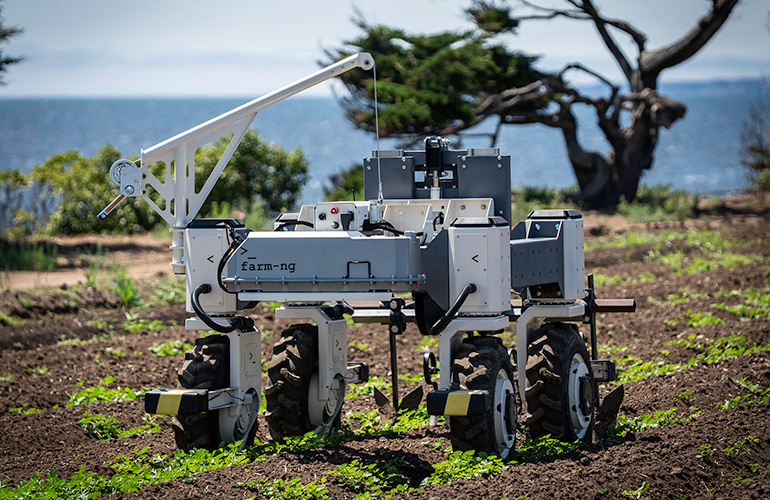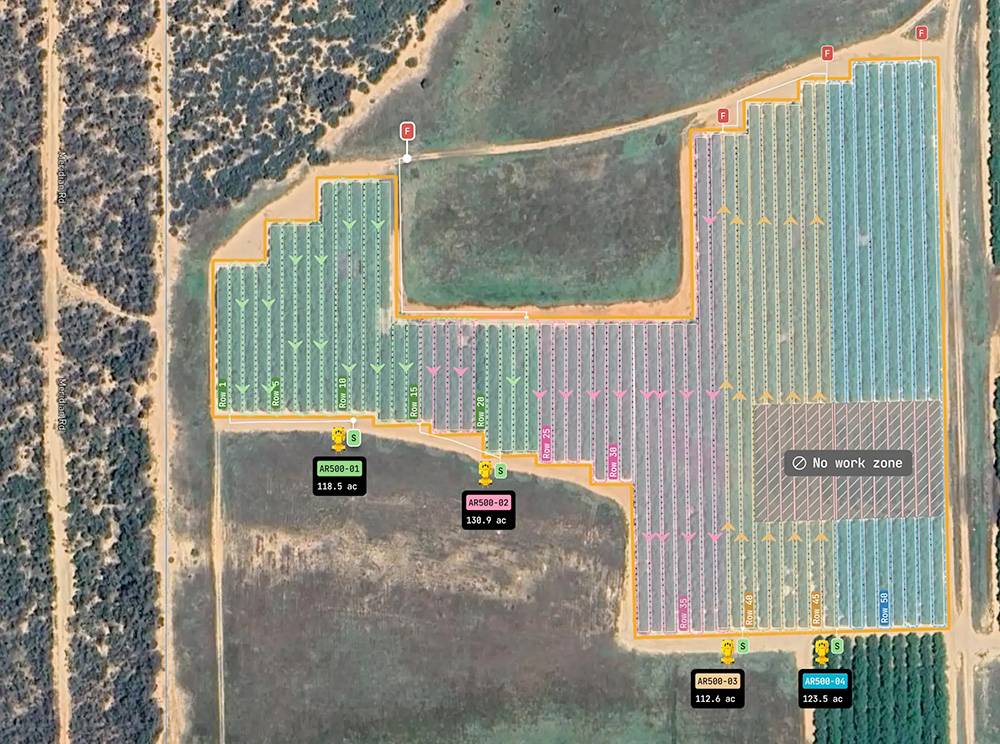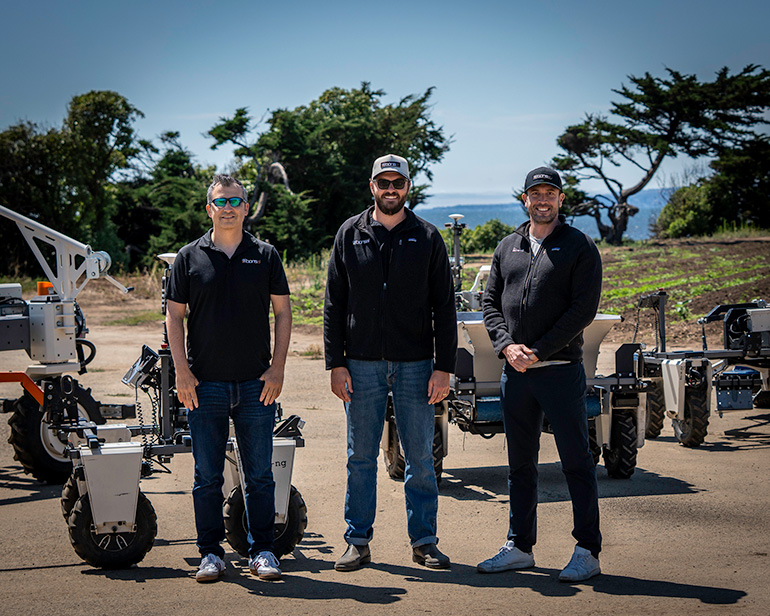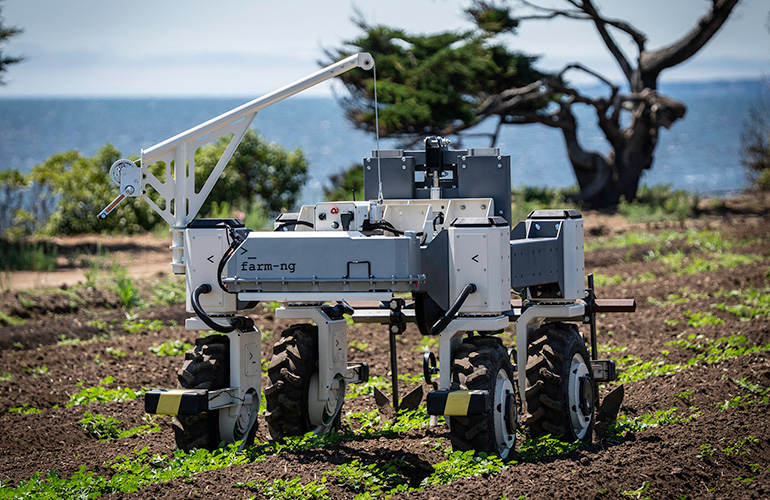
The farm-ng Amiga Max robot is in the final stages of development. | Credit: The Robot Report
Bonsai Robotics and farm-ng last week announced a merger of the two agrobotics organizations. The combined company will operate as Bonsai Robotics. I was invited to visit the farm-ng R&D facility in Watsonville, Calif. during my recent trip to cover the Indy Autonomous Challenge at nearby Laguna Seca Raceway.
I met with Bonsai CTO and co-founder Ugur Oezdemir, Bonsai CEO and co-founder Tyler Niday, and Brendan Dowdle, former CEO of farm-ng and now chief business officer of Bonsai Robotics.
Niday provided an in-depth demo of Bonsai’s VisionSteer software and fleet management interface. Oezdemir explained the details of the vision guidance that doesn’t rely on spotty GPS signals under the tree canopy of an orchard. The user interface tracks the progress of each vehicle on a mission, and the grower can go back in time to see work done on prior days.
Dowdle said the two companies have been working together for more than a year on joint projects, and that existing farm-ng customers are already piloting Bonsai’s software with their farm-ng Amiga robots.

The Bonsai Robotics fleet management interface enables a grower to instantly view the location and path of all of the Bonsai Robotics enabled vehicles in the orchard. | Credit: Bonsai Robotics
Developing a shared vision
The combined company is well on its way to optimizing a mutual product roadmap. The combined teams met for the first time earlier this week in the new unified Bay Area office. The company will combine all of the various teams based on function, and keep a software development center in the Bay Area and the existing hardware development labs in Watsonville (formerly farm-ng), and Davis, Calif. (formerly Bonsai Robotics).
The combined autonomy system can be optimized by enabling multi-purpose machine use across different seasons, reducing equipment idle time. In addition, the company expects to target specific plant needs instead of blanket treatments, with the ultimate goal to reduce input costs, improve crop productivity, and minimize environmental impact.
farm-ng recently released a new software update to the Amiga robot platform. Bonsai said the Amiga robot will continue to evolve as a modular, affordable, and robust platform. The company was in the final stage of development of the newest, larger-format Amiga vehicle, the Amiga Max.
The VisionSteer technology kit will continue to evolve as an OEM, retrofittable solution to enable any “drive-by-wire” farm machine to become autonomous. Core to the company’s new vision is to design smaller, more adaptable robots that can work in diverse crop environments.
Bonsai said it will continue developing fleet management software that allows one operator to manage multiple robots, while implementing precise vision systems that can detect individual plant conditions.
‘On the on the farm-ng side, we were solving the mobility part with AI robotics and computer vision as first principles,” Niday told The Robot Report. “The Bonsai team was tackling it from the software side, building a robust solution. We’ve explored a lot of different of these autonomy options, and this is by far the most capable autonomy system that we believe that exists in the market.”
He added, “That [is what] started the merger conversations between the two companies. We now have mobility and autonomy, mobility and navigation, hardware and software to make that available to the ecosystem to now build with autonomy-first kinds of principles.”

Left to right: Bonsai co-founder and CTO Ugur Oezdemir, co-founder and CEO Tyler Niday, and chief business officer Brendan Dowdle. | Credit: The Robot Report
The post Autonomy-first approach drives Bonsai, farm-ng roadmap appeared first on The Robot Report.

